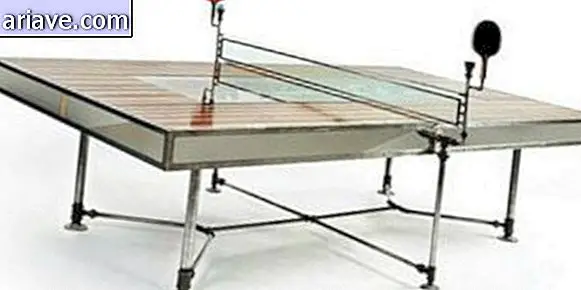Scientists devise methods for seeing opaque objects inside with visible light
Imagine being able to see through objects like Superman. This "superpower" may be closer than you might think, as many articles propose methods for viewing opaque objects, such as tissues of the human body, inside and using natural light: that is, with faithful colors.
Medicine already has several technologies to see the human body inside, such as x-ray, ultrasound and computed tomography. But using visible light has advantages: It interacts with the body, bringing along information such as biochemical changes, cellular anomalies, and blood glucose and oxygen levels.
Now scientists are getting good quality images of fine tissues, like a mouse's ears. If the technology can see even the deepest parts of the body, it can eliminate intrusive procedures such as biopsy or allow laser surgery with millimeter precision.
To see the tissues inside, one has to deal with the irregular absorption and refraction of light. That is, there is nothing to do with what is absorbed - information is lost forever - but in theory it is possible to reconstruct what has been spread. To this end, scientists were inspired by the solution astronomers use to solve the light scattering problem, which consists of using a deformable mirror to cancel distortions.

Trial and error
Allard Mosk and Ivo Vellekoop used a "space light modulator", a light emitter that can control the transmission of different parts of a laser beam by delaying one part relative to another. "They fired their laser through the modulator at a painted sheet of glass, placed a detector behind the object and used a computer to monitor how much light the detector can pick up, " says a Nature article.
"The computer then adds or subtracts the delays of each modulator pixel through a trial and error process to see which changes minimize laser scattering as it passes through the glass. In fact, the system is trying to give birth to the distortion that the opaque barrier would cancel, "he continues. After another hour of running the algorithm, they achieved a focus thousands of times stronger than the background signal.
Unaware of the experiment, bioengineer Changhuei Yang of the California Institute of Technology was trying a similar methodology. Both published articles were a trigger for other scientists to delve deeper into the study.

Deciphering Patterns
Optical physicist Jacopo Bertolotti of the University of Exeter (UK) has managed to have both the emitter and the detector in front of the object. In his experiment, he placed the fluorescent, 50-mic (0.05 mm) Greek letter "pi" behind an opaque screen.
When he turned on the phone, there was a blurry image of the object, as if behind a shower stall. What the scientist did was apply the laser, record the scattering pattern of light and then do the same thing at another angle. By repeating the process and comparing the patterns peer to peer, he was able to reproduce the letter format.

Internal lighting
Changhuei Yang and biologist Benjamin Judkewitz then conducted a more sophisticated experiment using a "time-reversing mirror" that returns light along the same path. They illuminated an object and focused an ultrasound, which does not spread easily, on a point of interest.
All the light passing through this point changed in frequency. On the other side, the mirror reflected only the modified beams of light that made their way back and added their energy to the light of the first pass, thus illuminating the place within an opaque object.
Now the challenge is to be able to do this in deeper places on the body, as technology now allows images to be taken in just 5.6 milliseconds, enough for moving targets like living tissue.
In addition to the obvious applications in medicine, the technique can be used to restore paintings, as it will be possible to see what was beneath the paint. "Many painters worked in many layers, and the ones below could influence the physical and chemical deterioration of the canvas, so there's a meaning in knowing what was there if you want to preserve it, " says Bertolotti. Another use is military, to see through shields.
Via TecMundo











